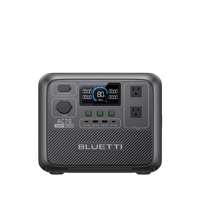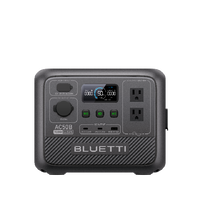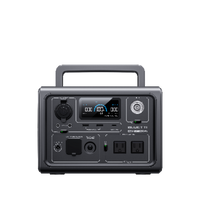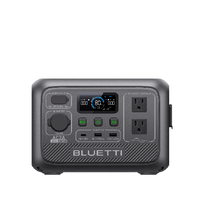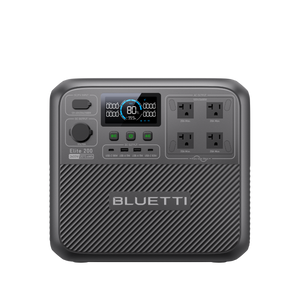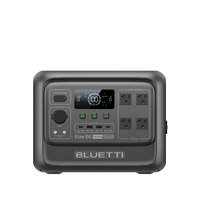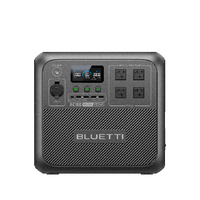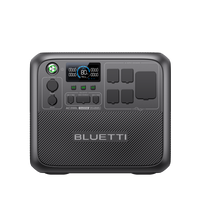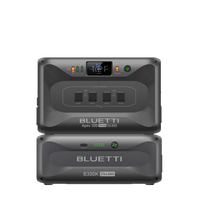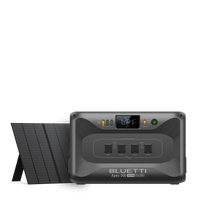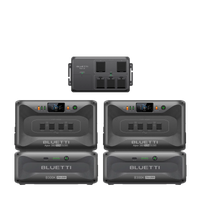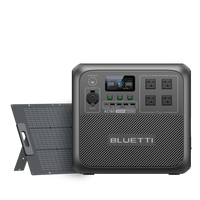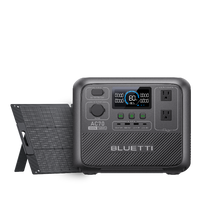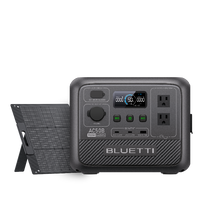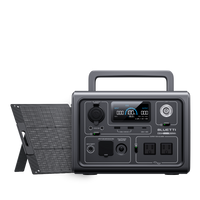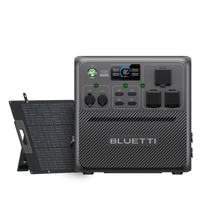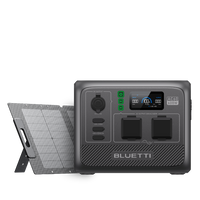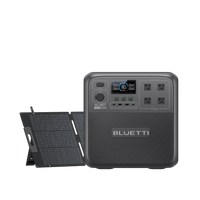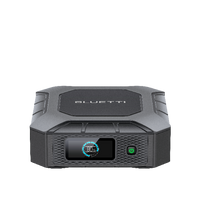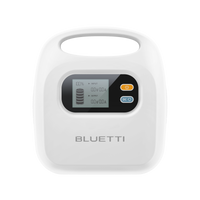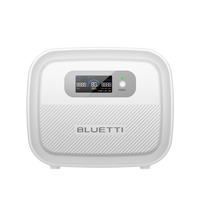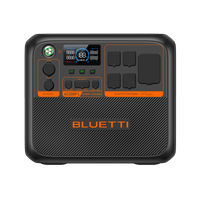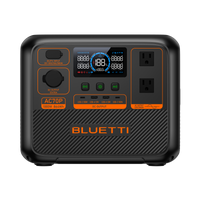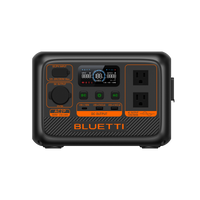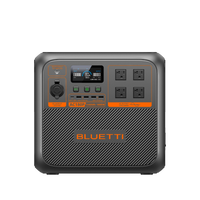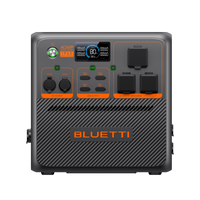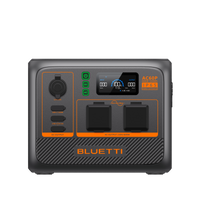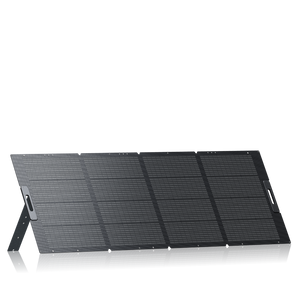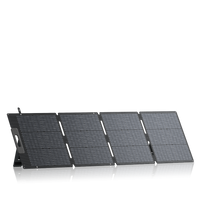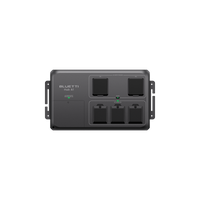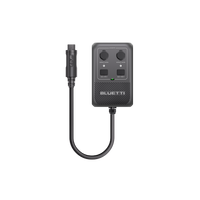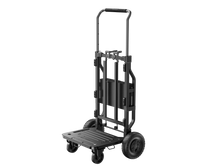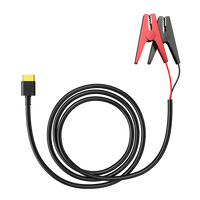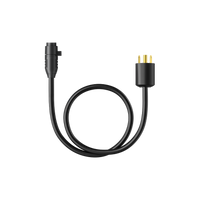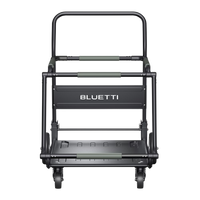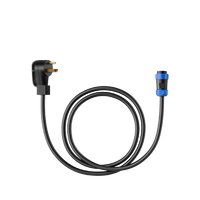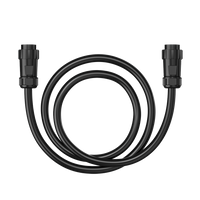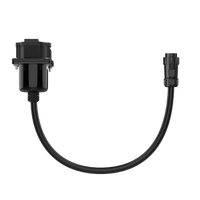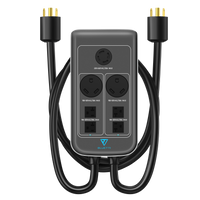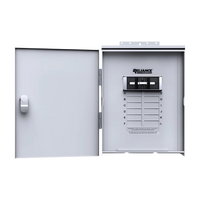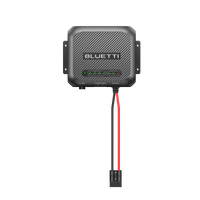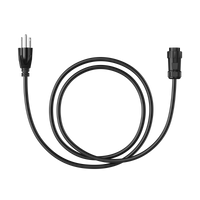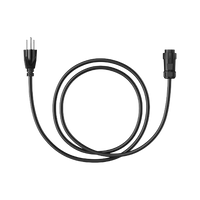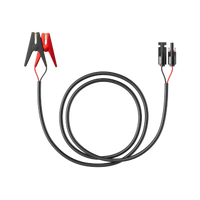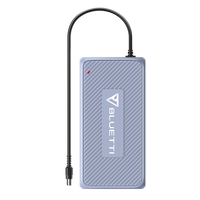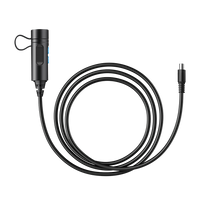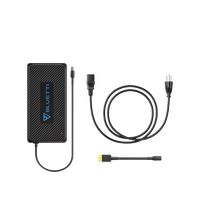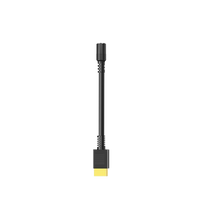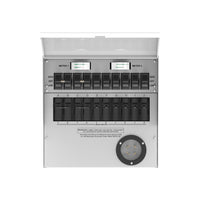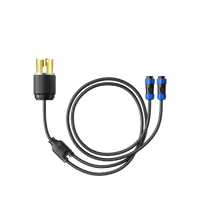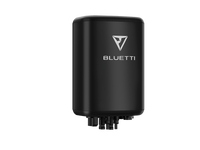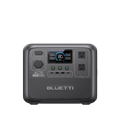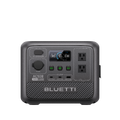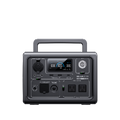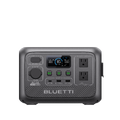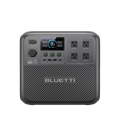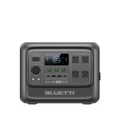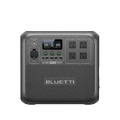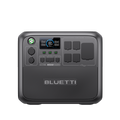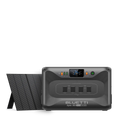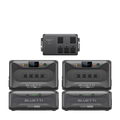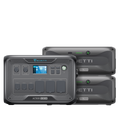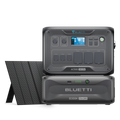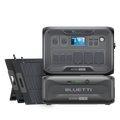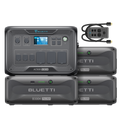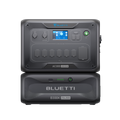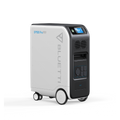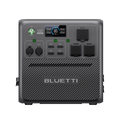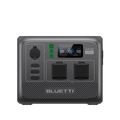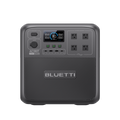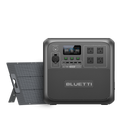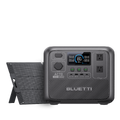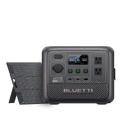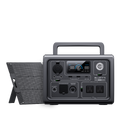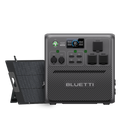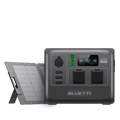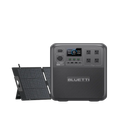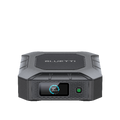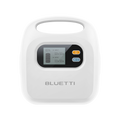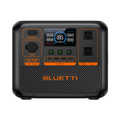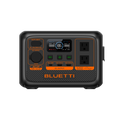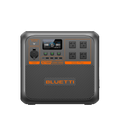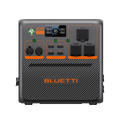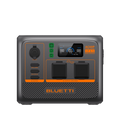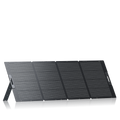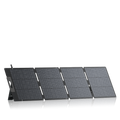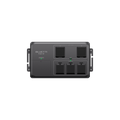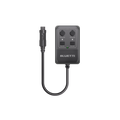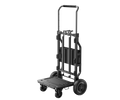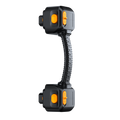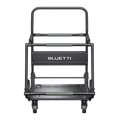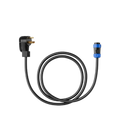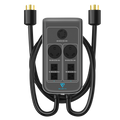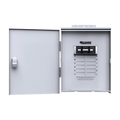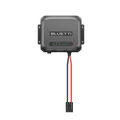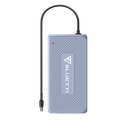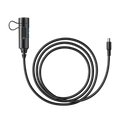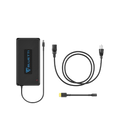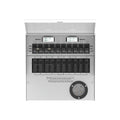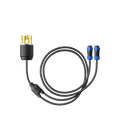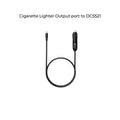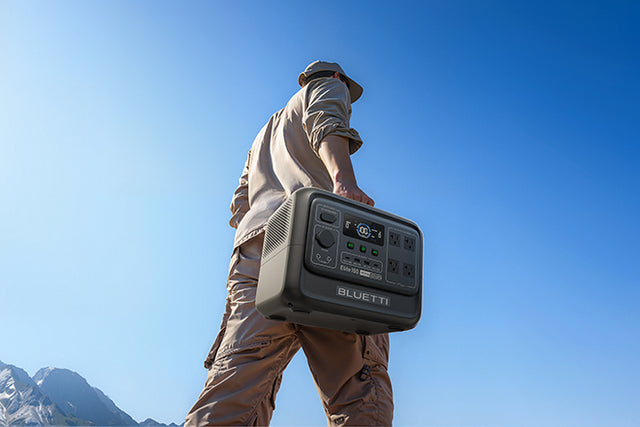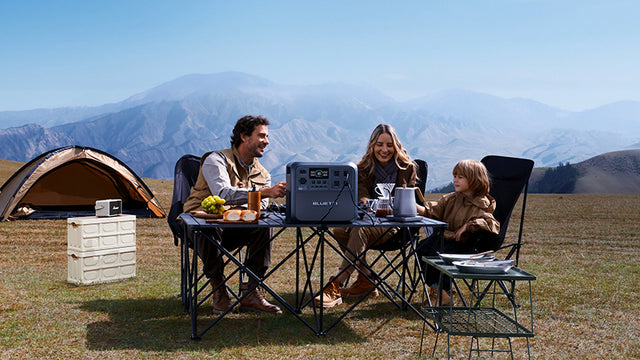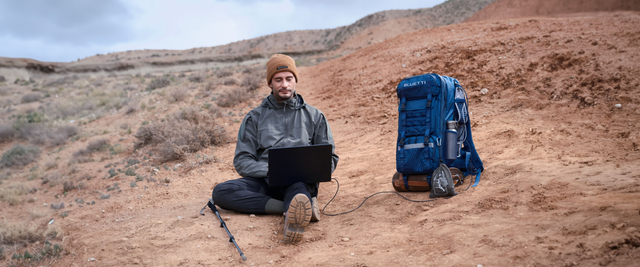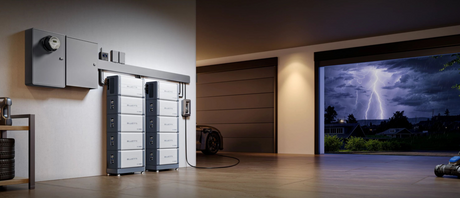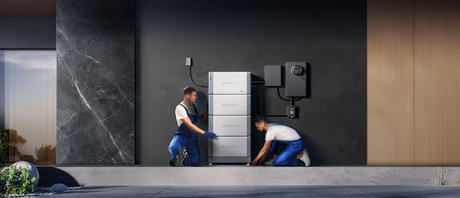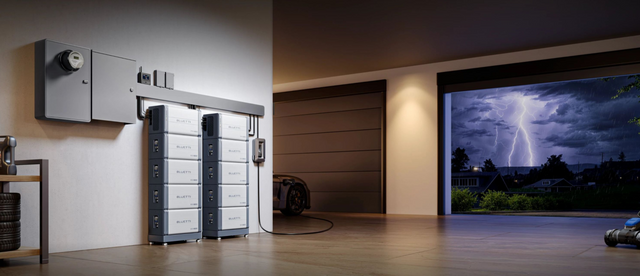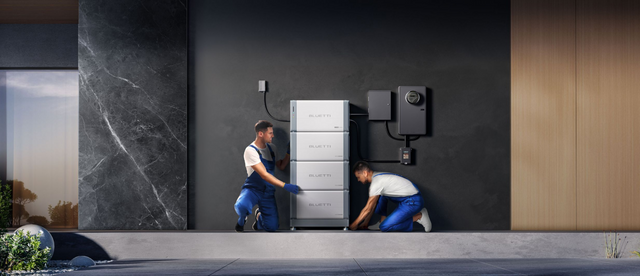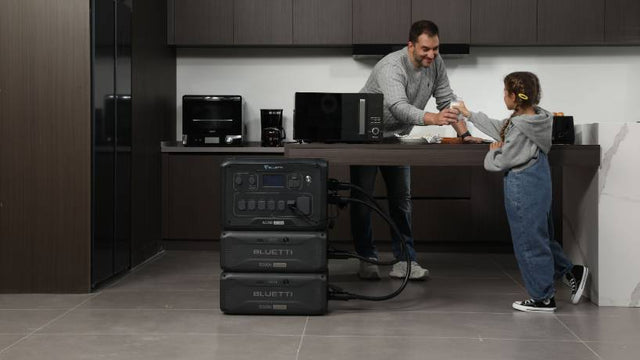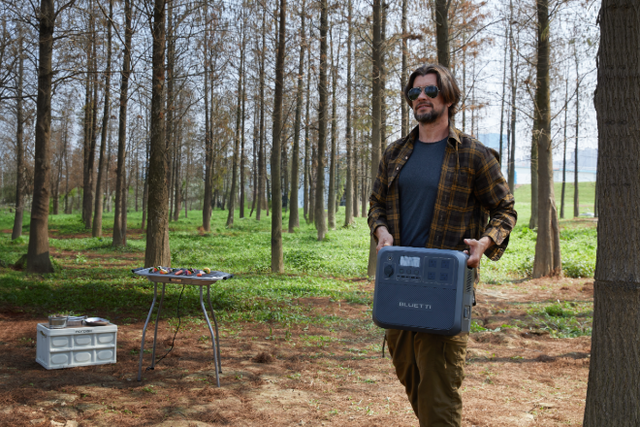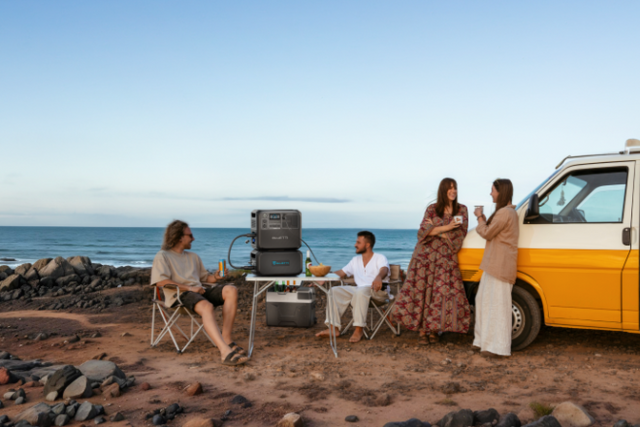Your cart is empty
Shop our products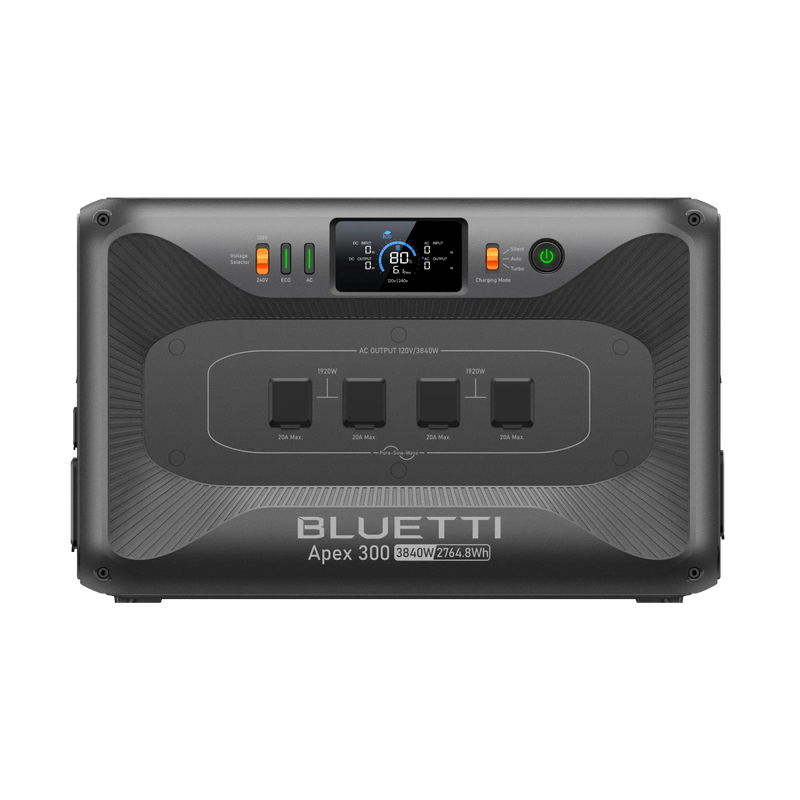
When picking a backup power source, you can find generators in just about every size imaginable, from small to large ones that'll juice up your entire residence. Some barely spit out 2,000 watts, while others go way past 10,000 watts. A 3,500-watt generator serves as a mid-range option between smaller and larger models.
It packs sufficient power to keep your appliances fired up for a long time if you utilize it wisely. This post explores what a 3500-watt generator can and cannot run in different scenarios. We are also going to share how an alternative solar-powered generator compares with a traditional 3500W unit and why it's better!
What Is a 3500-Watt Generator?
With a 3500W generator, you receive 3500 watts of continuous electricity for running devices. It can also manage quick bursts up to 4,000 watts (even 4,500 watts with some models) when kicking up some appliances. You can utilize a 3500W generator during blackouts at home, drag it to a job site, take it camping, or install it for your RV. Essential devices such as lights, phone chargers, and refrigerators can run on a 3500-watt generator. Below are its general features:
- Running Wattage: The output power of the 3500W generator and the continuous energy that appliances use for their operation.
- Starting Wattage: It's the output of the generator that it provides for a brief interval to support the surge demand of appliances, especially those with motors.
- Fuel: Mostly gasoline, but some models use both gas and propane.
- Runtime: 8–12 hours at half load.
- Noise: About 68 dBA (similar to a vacuum cleaner).
Types of 3500W Generators
The 3500W generators can be of many variants, including the following:
- Inverter Generators: They are fuel-efficient, small, and quiet, and can provide stable power to sensitive equipment.
- Solar Generators: They are more expensive initially but fuel-saving since they employ the use of solar panels, batteries, and inverters.
- Gasoline Generators: The most affordable and common of all 3500W generator types. They use gasoline and are mostly very loud as compared to the inverters.
- Dual-Fuel Generators: They can be either on gas or propane, which provides diversified gas availability selections depending on the availability or storage ease.
Avoid Overloading Your 3500W Generator
Overloading a 3500W generator can overheat and damage it. Thus, to run appliances on it, here are some steps you must take to maximize your generator's capacity without overburdening it:
- Make a power plan: List appliances with their running and starting watts.
- Add up usage: Don't go wild plugging appliances in. Keep them under 3500 running watts or surge limits.
- Stagger usage: Don't flip high-demand devices at once. Stagger their usage (e.g., start the fridge, wait some time, then switch on the microwave).
- Prioritize: Prioritize devices like life support, fridges, and lights to go first. Your lava lamp? That can wait.
- Be efficient: Swap out old bulbs for LEDs as they consume less power instead of chugging it.
- Watch load levels: Use the generator's display to track power use and avoid overload.
Safe Use of Extension Cords and Surge Protectors
Proper load management is also crucial for using a 3500W generator. For instance, the use of extensions and surge protectors can distribute generator power evenly through the appliances. Here's how:
- Extension Cords: Short, outdoor-rated high-watt extension cords (12-gauge or thicker) must be used with high-watt appliances.
- Surge Protectors: These protect your equipment against power gaps, and it is preferable that you get those with circuit breakers. There are also generators with incorporated surge protection.
- Power Tips: Group smaller items on a single surge protector and use large devices on independent circuits. Also, never exceed cord or device amp limits.
What Devices Can a 3500W Generator Power?
So, what can a 3500-watt generator run? Here's a simple look at the appliances it can power in different scenarios. This includes both the steady power (running watts) and the extra boost needed to start some appliances (starting watts):
-
Home Basics:
A 3500W generator can power up all crucial devices as well as many heavy-duty appliances at your residence. However, just make sure the highest starting watt + all other running watts don't go over the generator's surge limit:
|
Appliance |
Running Watts |
Starting Watts |
|
Large/Older Fridge |
800W |
1000-2000W |
|
Chest Freezer |
100-200W |
300-1000W |
|
Small Window AC |
500-700W |
750-2100W |
|
Medium Window AC |
700-1200W |
1050-3600W |
|
AC (15,000 BTU) |
1800W |
3500W |
|
AC (10,000 BTU) |
100-1500W |
2000-3000W |
|
Water Pump 1 HP |
1500W |
3000W |
|
1/3 HP Sump Pump |
300-800W |
1300-2900W |
|
LED Lights |
5-20W per bulb |
- |
|
TV/Chargers |
50-300W (TV), 5-90W (chargers) |
- |
|
Gaming Console |
70-200W |
- |
|
Blender |
300-800W |
1000W |
|
Fan |
55-100W |
150W |
|
Microwave Oven |
800-1200W |
1500W |
|
Dishwasher |
1200-1500W |
- |
|
Food Processor |
300-600W |
600-1200W |
|
Hair Dryer |
1800-2000W |
- |
|
Coffee Maker |
600-1200W |
- |
|
Electric Grill |
1000-1500W |
1500-2000W |
|
Electric Furnace Fan |
800W |
2350W |
|
Washing Machine |
500-1400W |
1200-2500W |
-
RV & Outdoor Use
A 3500W generator can also be used in RVs and for recreational activities like camping, hiking, and entertainment. You can also run multiple devices at once:
|
Appliance |
Running Watts |
Starting Watts |
|
LED Lights |
5-20W per bulb |
- |
|
Phone Charger |
5-90W |
- |
|
RV Refrigerator |
600W |
1200W |
|
RV Roof AC (13,500 BTU) |
1500 |
3000W |
|
Toaster |
800-1500W |
- |
|
Small Microwave Oven |
600W |
800W |
|
Portable Stove |
1000-1500W |
- |
|
RV Furnace Fan |
600-800W |
1200-1500W |
|
Box Fan |
50-200W |
- |
|
TV (32") |
50-150W |
- |
|
CPAP Machine |
50-100W |
- |
|
Portable Fan |
50-100W |
- |
|
Electric Space Heater |
1500–1800W |
- |
|
RV Water Pump |
500-800W |
1000-1500W |
|
Hair Dryer |
1800-2000W |
- |
|
Coffee Maker |
600-1200W |
- |
|
Electric Grill |
1000-1500W |
1500-2000W |
|
Small PA System (2-4 speakers) |
100-300W |
150-600W |
|
Medium PA System (4-6 speakers) |
400-800W |
800-1600W |
|
DJ Setup (2 tops, 2 subs, mixer) |
800-1500W |
1600-3000W |
|
Portable Bluetooth Speaker |
20-100W |
30-150W |
-
Power Tools (Job Site)
You can also run numerous power tools with a 3500W generator on a construction site. But as many power tools have high surges, it would be wise to stagger them, e.g, switch off the circular saw before starting the hammer drill:
|
Tool |
Running Watts |
Starting Watts |
|
Impact Driver |
500–800W |
1,000W |
|
Drill |
300–700W |
450–2100W |
|
Circular Saw |
1200-1800W |
2400-3000W |
|
Chainsaw |
1200W |
- |
|
Air Compressor 1/4HP |
975W |
1600W |
|
Airless Sprayer 1/3HP |
600W |
1200W |
|
Reciprocating Saw |
960W |
- |
|
Hammer Drill |
1000-1600W |
2400-3000W |
|
Belt Sander |
1200 |
2400 |
|
Quartz Halogen Work Light |
300-1000W |
- |
Use Case Examples of What a 3500W Generator Can Run
Here are 4 use case examples of how a 3500W generator can be used in different situations while keeping running and starting power within safe limits:
Scenario 1: Home Emergency Backup During Power Outage
- Refrigerator (800W running, 2000W starting).
- LED Lights (10W x 5 bulbs = 50W running).
- Phone Charger (10W running).
- WiFi Router (10W running).
- Sump Pump (300W running, 1300W starting).
- TV (100W running).
This home emergency backup power setup has a total of 1,270W running watts. But if you start the fridge, the total will be 3,270W, and for the sump pump, it will be 2,570W. But if you add the surge power of both the fridge and the pump, it will exceed 4,500W. So, make sure to start the fridge and sump pump at different times and avoid overlapping surges.
Scenario 2: RV Camping with Comforts
- LED Lights (20W x 3 = 60W running).
- RV Fridge (600W running, 1200W starting).
- Water Pump (500W running, 1000W starting).
- Coffee Maker (800W running).
You can employ a 3500W generator for a comfortable RV setup. The total running wattage of appliances is 1960W. But if you add the surge power of the fridge, the sum will go up to 3160W, which is well within the generator's limit. You can also add a water pump to the mix. However, make sure both the fridge and the pump start at different times.
Scenario 3: Outdoor Party with Sound System
- Medium PA System (600W running, 1200W starting).
- String Lights (100W running).
- Mini Fridge (400W running, 800W starting).
This setup has a 1100W running wattage. You can start (3100W) both the mini fridge and the medium PA system without worries with a 3500W generator.
Scenario 4: Construction Site Power Tools
- Chain Saw (1200W running).
- Quartz Work Light (500W running).
- Airless Sprayer 1/3 HP (600W running, 1200W starting).
This setup has a total of 2300W of running power. When you add the 1200W starting watts of the sprayer, the sum becomes 3500W, which a 3500W generator can manage comfortably.

What a 3500W Generator Won't Power?
Here are some appliances that a 3500W generator won't power at the same time in certain situations. This is because the sum of their running or starting wattage might exceed the generator's own:
Scenario 1: Large Home Appliances
- Large Window AC 15,000 BTU (1800W running, 3500W starting).
- Fridge (800W running, 2000W starting).
- Microwave (1200W running, 1500W starting).
- 1/3 HP Sump Pump (800W running, 2900W starting).
The total surge demand is 9,900W. While the running load is 4,600W. Thus, this setup won't function at all, as the surge demand is more than twice the 4,500W limit, and even the continuous power needed is too high.
Scenario 2: RV Setup (Overloaded)
- RV Roof AC 13,500 BTU (1500W running, 3000W starting).
- Electric Grill (1500W running, 2000W starting).
- Hair Dryer (2000W running).
Total surge demand is 5,000W from the AC and grill, and the running load is also 5,000W. Thus, this setup won't function at all, as both the surge and running power needs are too high for a 3,500W generator.
Scenario 3: Jobsite High Demand
- Circular Saw (1800W running, 3000W starting).
- Air Compressor 1/4 HP (975W running, 1600W starting).
- Hammer Drill (1600W running / 3000W starting).
The total surge is 7,600W from the saw, compressor, and drill, with 4,375W needed to keep them running. This won't function as the surge is nearly twice the limit, and running power is over the 3,500W capacity of the generator.
BLUETTI 3500W Solar-Powered Generator
Solar generators are suitable to be used in RVs, camping, and enclosed areas. This is because they do not make fumes or noise like gas generators, which may be noisy and dangerous to use in confined areas. Solar is also cheaper in the long run, and once the system is up, everything further is free of charge and has minimal maintenance.
Moreover, solar power is safer for sensitive electronics due to its clean output, while gas models can sometimes damage devices. Employ solar for indoor backup, camping, short outages (with battery), and powering sensitive devices. Whereas you choose gas for emergencies, job sites, long outages with fuel, and running heavy-duty appliances like well pumps or AC.
However, some solar generators also provide high output for powering up heavy-load appliances like the BLUETTI Apex 300. It has an output of 3,840W with a capacity of 2,764.8Wh. You can also link two units to supply up to 7,680W and 58 kWh capacity. Thus, during long outages, you can maintain large appliances like your fridge and AC, along with crucial items such as Wi-Fi, a laptop, a phone, and even medical equipment.

The Apex 300 boasts weather warnings, automatic charging during poor weather conditions, and immediate backup power with zero latency switchover. It supports AC bypass charging with a capacity of up to 6 kW at 120V/50A (Charging + Bypass) or 12 kW at 240V/50A (Charging + Bypass). For solar input, the unit is equipped with two XT60PM-M ports, each capable of handling 1,200W (12V-60V, 20A Max), for a total solar input of 2,400W. Additionally, the Apex 300 supports 15A AC input (120V, 1,440W max) for standard charging. Using TurboBoost, it is possible to charge the unit up to 80% in 45 minutes and to 100% in 65 minutes with AC input.
It has 6 AC outlets, space-efficient DC charging through Hub D1, and 120V/240V split phase. Combined with BLUETTI SolarX 4K, the unit can process 4 kW–30 kW of solar power and connect to the rooftop systems through the MC4 connectors by AC-coupling. This is a wonderful option for DIY systems. One more way to save money is to charge the Apex 300 during low hours and consume power when rates are high.
Appliances Running Time With BLUETTI Apex 300
|
Appliance |
Running Wattage |
Running Time |
|
AC (15,000 BTU) |
1800W |
1.31 hours |
|
Microwave Oven |
1200W |
1.97 hours |
|
Large/Older Fridge |
800W |
2.96 hours |
|
TV (32") |
50 |
47.29 hours |
|
Phone Charger |
90W |
26.27 hours |
FAQs
-
What is the tank life of a 3500-watt generator?
A traditional 3500W gas generator will operate 8 to 12 hours on half load (roughly 1750W) before needing a full tank and 4 to 6 hours at full load. The run time varies depending on the model, but the high-end inverter generators may go as long as twenty hours with a low load. Whereas with mere gasoline models, they might last only 6-8 hours. Nevertheless, the specifications should always be consulted concerning the precise consumption of fuel.
-
Does a 3500-watt generator power an AC?
Yes, a 3500W generator can juice up a small AC. However, this very much depends on the size of the AC as well as its start-up surge. Up to about 10,000 BTU (up to ~1000W continuous, 2000-3000W surge) are generally ok unless other large appliances, such as microwave ovens, are switched on simultaneously.
A 15,000 BTU unit can theoretically be excessive unless the generator can bear surges in excess of 4,000 W. It is also suggested that the starting watts of the generator and appliances must always be checked to prevent an overload.
-
What number of amperes does a 3500W power generator have?
A 3500-watt generator produces 29 amps at 120V and 14.5 amps at 240V. Most devices in a residence, like the fridge, TV, and lights, run on 120V anyway. But if you start stacking on 120V appliances, the total goes way beyond the 29 amps. So, avoid maxing out your 3500W generator.
-
Are you able to run a residence using a 3500-watt generator?
No. A 3500-watt generator isn't going to juice up your entire residence. But it'll keep the basics running, like lights, a fridge, a sump pump, your Wi-Fi (because, priorities), and maybe even a small window AC. However, it will not operate any of your many large appliances like electric heaters, etc., with the Window AC.
But if you really want to keep your whole residence powered during a blackout, go for something like 7500 watts or more. Nevertheless, in the event of an outage, a 3500W generator can still keep your essentials running, as long as you're smart about what you plug in.
Final Word
A 3500-watt generator can run appliances with high demands and small and medium-sized gadgets. But the amount of energy consumed shouldn't exceed the capacity of the generator. It may also not be wise to run high-power gadgets all at once. This makes it necessary that you understand your energy requirements and make a plan.
To have a much quieter, cleaner, and more flexible alternative backup solution, a solar generator is a splendid decision, such as the BLUETTI Apex 300. It has an output of up to 3840W and is able to store 2764.8Wh of energy, which is more than enough to run large devices. If you want to run heavy-load appliances, you can also link two units in parallel for a whopping 7,680W and 58 kWh capacity.
Furthermore, the Apex 300 can be charged by using solar, a car charger, a wall outlet, or a generator. The unit also gets connected automatically to backup power with no latency (0ms), in the event of a power outage. It is a smart but also futuristic alternative to charging devices during an emergency, on an RV, when outdoor camping, and when hosting outdoor events.

